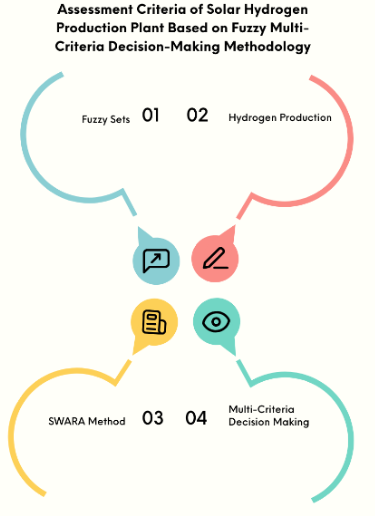Assessment Criteria of Solar Hydrogen Production Plant Based on Fuzzy Multi-Criteria Decision-Making Methodology
Main Article Content
Abstract
This study presents a comprehensive solar hydrogen production plant assessment, focusing on evaluating its technological efficiency, economic viability, environmental impact, and operational reliability. Leveraging solar photovoltaic technology and electrolysis processes, the plant converts abundant solar energy into hydrogen, offering a sustainable pathway towards clean energy production. The assessment encompasses a detailed analysis of solar panel efficiency, electrolyze performance, cost-effectiveness, lifecycle emissions, and operational considerations. Findings reveal that while technological advancements drive enhanced efficiency and reliability, economic viability remains challenging due to high initial capital costs. However, the environmental benefits, including reduced carbon footprint and water usage, underscore the plant's potential contribution to a low-carbon future. Operational assessments highlight the need for scalable, grid-integrated systems with robust safety measures. Overall, the evaluation provides critical insights into the opportunities and challenges of solar-driven hydrogen production, offering recommendations to optimize plant efficiency, reduce costs, and promote its widespread adoption. We used the multi-criteria decision-making (MCDM) concept for various criteria. The SWARA method is used to compute the weights of criteria. The SWARA method is integrated with fuzzy numbers to overcome the uncertainty data. The main results show that solar production has the highest rank.
Downloads
Article Details

This work is licensed under a Creative Commons Attribution 4.0 International License.





